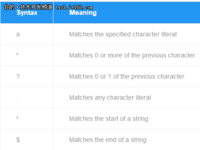【IT168技术】从《C#高级编程》了解到给线程传递参数有两种方式,一种方式是使用带ParameterizedThreadStart委托参数的Thread构造函数;另一种方式是创建一个自定义类,把线程的方法定义为实例的方法,这样就可以初始化实例的数据,之后启动线程。
方式一:使用ParameterizedThreadStart委托
如果使用了ParameterizedThreadStart委托,线程的入口必须有一个object类型的参数,且返回类型为void。且看下面的例子:
using System;using System.Threading;namespace ThreadWithParameters{
class Program
{
static void Main(string[] args)
{
string hello = "hello world";
//这里也可简写成Thread thread = new Thread(ThreadMainWithParameters);
//但是为了让大家知道这里用的是ParameterizedThreadStart委托,就没有简写了
Thread thread = new Thread(new ParameterizedThreadStart(ThreadMainWithParameters));
thread.Start(hello);
Console.Read();
}
static void ThreadMainWithParameters(object obj)
{
string str = obj as string;
if(!string.IsNullOrEmpty(str))
Console.WriteLine("Running in a thread,received: {0}", str);
}
}
}
这里稍微有点麻烦的就是ThreadMainWithParameters方法里的参数必须是object类型的,我们需要进行类型转换。为什么参数必须是object类型呢,各位看看ParameterizedThreadStart委托的声明就知道了。
public delegate void ParameterizedThreadStart(object obj); //ParameterizedThreadStart委托的声明
方式二:创建自定义类
定义一个类,在其中定义需要的字段,将线程的主方法定义为类的一个实例方法,说得不是很明白,还是看实际的例子吧。
using System;using System.Threading;namespace ThreadWithParameters{
public class MyThread
{
private string data;
public MyThread(string data)
{
this.data = data;
}
public void ThreadMain()
{
Console.WriteLine("Running in a thread,data: {0}", data);
}
}
class Program
{
static void Main(string[] args)
{
MyThread myThread = new MyThread("hello world");
Thread thread = new Thread(myThread.ThreadMain);
thread.Start();
Console.Read();
}
}
}
对这种方法也不是很满意,总不能一遇到比较耗时的方法,就新建一个类吧。
那有什么更好办法即不用强制类型转换,也不用新建一个类呢?
下面就介绍下我无意中找到的一个方法,具体是在哪见过的我也不记得了。
方式三:利用lambda表达式
using System;using System.Threading;namespace ThreadWithParameters{ class Program
{
static void Main(string[] args)
{
string hello = "hello world";
//如果写成Thread thread = new Thread(ThreadMainWithParameters(hello));这种形式,编译时就会报错
Thread thread = new Thread(() => ThreadMainWithParameters(hello));
thread.Start();
Console.Read();
}
static void ThreadMainWithParameters(string str)
{
Console.WriteLine("Running in a thread,received: {0}", str);
}
}
}
哇,你会发现既不用类型强制转换也不用新建类就运行成功了。
但是为什么这种方式能行呢,根据昨天 @乱舞春秋 的提示,我也用ildasm反编译了一下,确实如他所说,我所谓的第三种方式其实和第二种方式是一样的,只不过自定义类编译器帮我们做了。
下面的是第三种方式main方法反编译的IL代码:
.method private hidebysig static void Main(string[] args) cil managed
{
.entrypoint
// 代码大小 51 (0x33)
.maxstack 3
.locals init ([0] class [mscorlib]System.Threading.Thread thread,
[1] class ThreadWithParameters.Program/'<>c__DisplayClass1' 'CS$<>8__locals2')
IL_0000: newobj instance void ThreadWithParameters.Program/'<>c__DisplayClass1'::.ctor()
IL_0005: stloc.1
IL_0006: nop
IL_0007: ldloc.1
IL_0008: ldstr "hello world"
IL_000d: stfld string ThreadWithParameters.Program/'<>c__DisplayClass1'::hello
IL_0012: ldloc.1
IL_0013: ldftn instance void ThreadWithParameters.Program/'<>c__DisplayClass1'::'<Main>b__0'()
IL_0019: newobj instance void [mscorlib]System.Threading.ThreadStart::.ctor(object, native int)
IL_001e: newobj instance void [mscorlib]System.Threading.Thread::.ctor(class [mscorlib]System.Threading.ThreadStart)
IL_0023: stloc.0
IL_0024: ldloc.0
IL_0025: callvirt instance void [mscorlib]System.Threading.Thread::Start()
IL_002a: nop
IL_002b: call int32 [mscorlib]System.Console::Read()
IL_0030: pop
IL_0031: nop
IL_0032: ret } // end of method Program::Main
在看看第二种方式的IL代码:
.method private hidebysig static void Main(string[] args) cil managed
{
.entrypoint
// 代码大小 44 (0x2c) .maxstack 3
.locals init ([0] class ThreadWithParameters.MyThread myThread,
[1] class [mscorlib]System.Threading.Thread thread)
IL_0000: nop
IL_0001: ldstr "hello world"
IL_0006: newobj instance void ThreadWithParameters.MyThread::.ctor(string)
IL_000b: stloc.0
IL_000c: ldloc.0
IL_000d: ldftn instance void ThreadWithParameters.MyThread::ThreadMain()
IL_0013: newobj instance void [mscorlib]System.Threading.ThreadStart::.ctor(object, native int)
IL_0018: newobj instance void [mscorlib]System.Threading.Thread::.ctor(class [mscorlib]System.Threading.ThreadStart)
IL_001d: stloc.1
IL_001e: ldloc.1 IL_001f: callvirt instance void [mscorlib]System.Threading.Thread::Start()
IL_0024: nop
IL_0025: call int32 [mscorlib]System.Console::Read()
IL_002a: pop
IL_002b: ret } // end of method Program::Main
比较两端代码,可以发现两者都有一个newobj,这句的作用是初始化一个类的实例,第三种方式由编译器生成了一个类:c__DisplayClass1
IL_0000: newobj instance void ThreadWithParameters.Program/'<>c__DisplayClass1'::.ctor()
IL_0006: newobj instance void ThreadWithParameters.MyThread::.ctor(string)

















